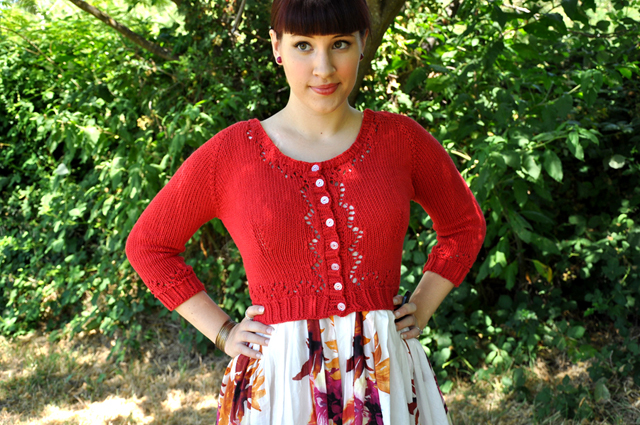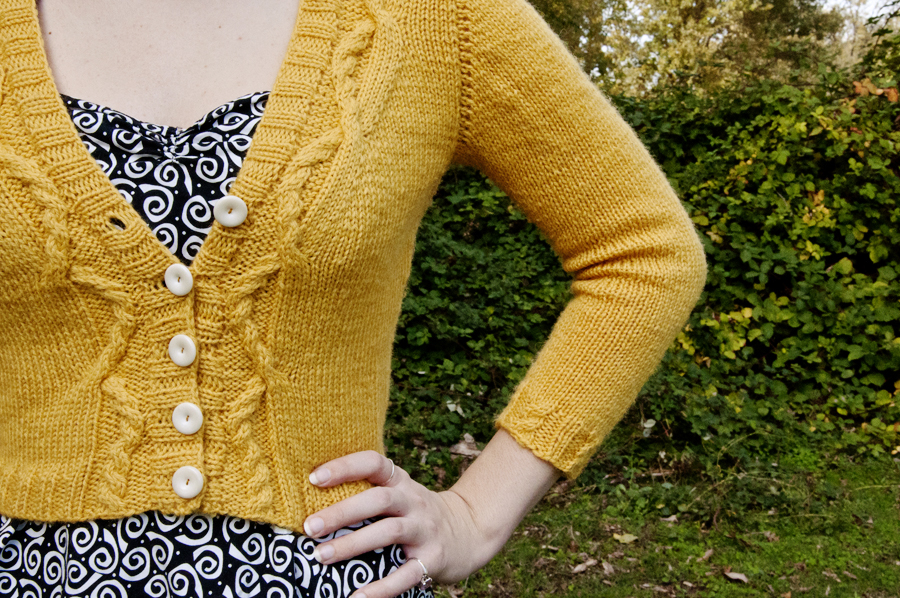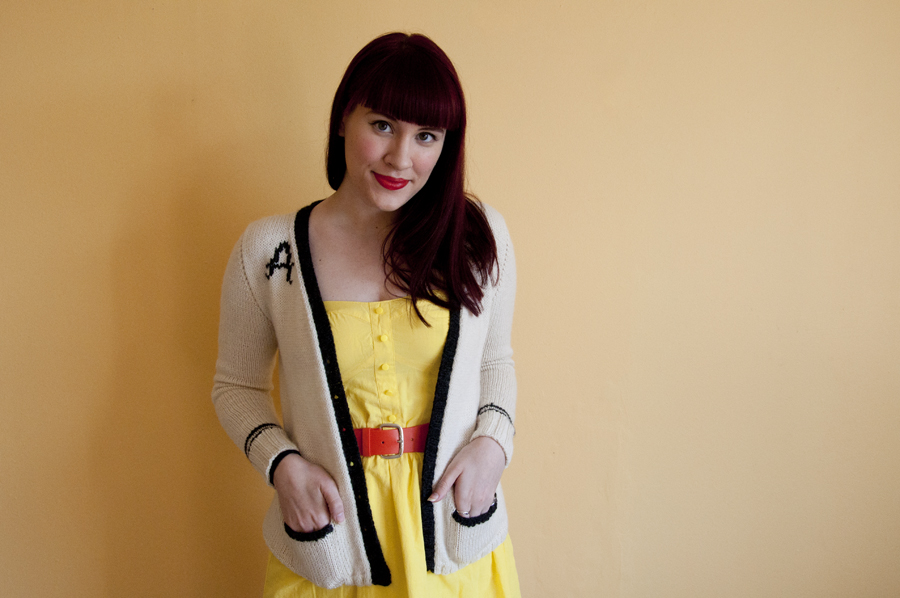I often get emails from people who look at the schematic of a pattern, take their measurements, look at the suggested ease, and find themselves stuck and unsure what size to cast on. Sometimes it’s a case of not fully understanding ease, and in other cases knitters just want confirmation that they’re understanding things correctly and making the right choice. Whatever the issue may be, I imagine that for every one of those emails, there are four other knitters who are wondering the same thing but are afraid to ask. So here are my answers for everyone to read!

Understanding Ease
Garment patterns will ideally tell you the recommended ease. Ease is the difference between the garment’s measurements and your own measurements. A sweater with positive ease is bigger in circumference than the wearer, and a sweater with negative ease is smaller in circumference than the wearer. A sweater with zero ease has the same circumference as the wearer. Almost all of my patterns recommend negative ease which can sound scary if you’re new to knit garments. Negative ease makes for a snug fitting sweater, but knits are stretchy so negative ease isn’t restrictive like you might imagine it to be. Positive ease is less form fitting, and tends to be drapier. To get an idea of what kind of ease you’re used to wearing, take your own measurements, and then measure your favorite store bought sweaters. Compare and see what you like!

Choosing a Size
You can use the pattern’s suggested ease and your measurements to find the best size for you. For example, if you have a 34 inch bust and the pattern suggests 1-3 inches of negative ease, your ideal size would have a finished bust measurement somewhere in the 31-33 inch range. Sometimes, however, you end up outside of that range. For example, let’s imagine that the pattern comes in sizes 30 (34, 38, 42). If you don’t want to modify the pattern, you have to choose between 4 inches of negative ease and zero ease. Which do you go with? That’s where knowing what you like comes into play! If you measured your favorite store bought sweaters and you know that you like tighter sweaters, choose the size with 4 inches of negative ease. If you know you prefer sweaters that have a looser fit, choose the size with zero ease.

To Fit vs. Finished Measurements
Sometimes, instead of suggested ease, a pattern will give you measurements “to fit.” These measurements have the ease calculated for you. For our hypothetical pattern, the sizes are to fit 32 (36, 40, 44) inch chests. These aren’t the measurements of the actual sweater; they’re the measurements of the ideal wearer for each size. If the final sweater measurements are available to you, you can use them to figure out the ease. For our hypothetical pattern, that is 2 inches of negative ease. I’m not a fan of this style because it leaves a lot of knitters confused because it doesn’t give you a range of fit and it’s hard to choose your size if you don’t match the suggested measurements nicely. I also simply don’t like telling knitters which size they should be wearing. Fit and ease are personal preferences, and although I have my recommendations as a designer, I prefer to leave the final decision up to the knitter.

Study Your Schematic
Now, most of this advice is focused on your bust measurement, but it’s not the only measurement to consider when choosing your size. The bust measurement is sort of the standard measurement used to describe sizes and one of the more important ones for good fit. It’s also the easiest to use to describe ease because the suggested ease isn’t universal throughout a garment. You want more ease through the armhole, and less across the shoulders and so on. In most cases “suggested ease” is actually “suggested ease through the torso of the body.” So with that in mind, study that schematic to make sure that your measurements correspond nicely with the measurements for the size you think you’d like to knit. For a fitted sweater with set-in sleeves, the cross shoulder measurement typically should closely match your own, and the armholes should be deeper than your own measurement. Make sure all the measurements for a size will work well on you before you commit to knitting a whole sweater based on them. If your bust is larger or smaller for your frame than the body type the standard sizes are based on, choosing a size according to your bust measurement alone could steer you wrong.


Leave a Reply